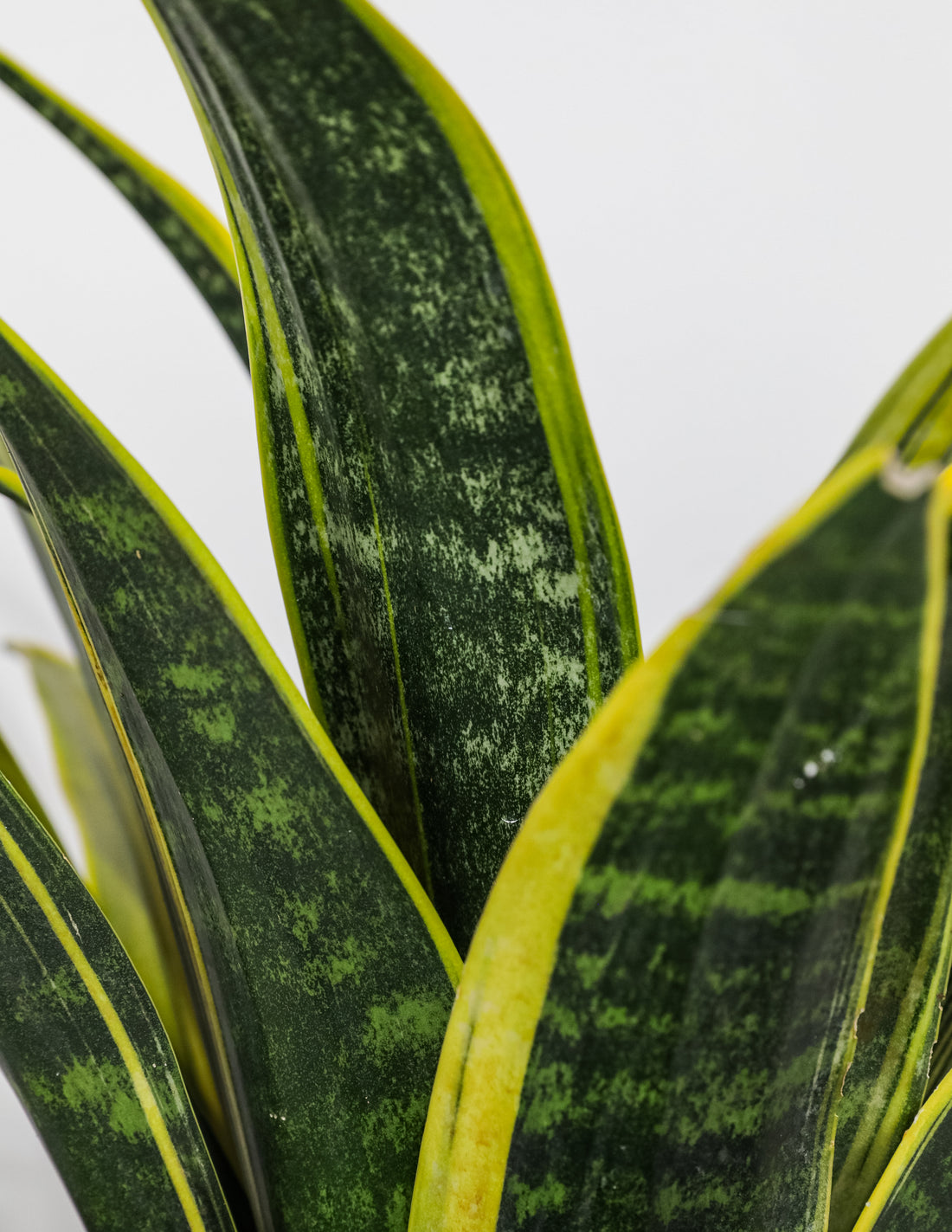Things about Snake Plant Leaves Turning Yellow
Wiki Article
Getting My Snake Plant Leaves Turning Yellow To Work
Table of ContentsAbout Snake Plant Leaves Turning YellowSnake Plant Leaves Turning Yellow Can Be Fun For AnyoneNot known Facts About Snake Plant Leaves Turning YellowSnake Plant Leaves Turning Yellow Can Be Fun For AnyoneSnake Plant Leaves Turning Yellow for Beginners
Right here are seven factors your snake plant's leaves might be transforming yellow and just how to repair it. Several various plant issues can create yellow fallen leaves, or chlorosis. Chlorosis takes place when plants do not have the trace elements they need to create chlorophyll, which makes foliage green and allows plants to convert sunshine into food.Snake plants are drought tolerant thanks to their delicious fallen leaves. These plants grow finest in loose, well-drained dirt that's allowed to dry completely between waterings and may just need water once per month during winter months. Overwatering can protect against origins from soaking up moisture and nutrients that the plant requires and can even trigger origin rot.
A potbound plant can't absorb nutrients from the dirt. If your serpent plant is overcrowded or outgrowing its pot, this may be the reason of yellow leaves.
Ensure the plant has bright, indirect light and constantly warm temperature levels, and water just as soon as the soil has actually fully dried. Watch out for issues and catch them early to keep your plant looking healthy and balanced and lovely.
Examine This Report about Snake Plant Leaves Turning Yellow
If the fallen leaves on your snake plant are obtaining soft, it's usually an indicator of way too much water. Snake plants store water in their fallen leaves and if they're overwatered, the fallen leaves can end up being soft and mushy. If you assume your snake plant is being overwatered, enable the dirt to dry out totally prior to watering again.Yes, some yellowing is normal and to be anticipated on older fallen leaves, especially as serpent plants age. If the plant is otherwise healthy and balanced and the fallen leaves are only gently yellowed after that there is no cause for worry. If the leaves are significantly yellowed or if there are other indications of distress after that it's ideal to take action.
Dead leaves can offer a home for parasites and illness, which can after that spread out to the rest of the plant. To eliminate a dead fallen leave, merely suffice off at the base with a sharp knife or scissors. Be sure to sanitize your reducing device in between cuts to prevent the spread of disease.
In basic, serpent plants ought to be watered every one to two weeks. If you think your serpent plant has been overwatered, the initial step is to stop watering it.
Snake Plant Leaves Turning Yellow Things To Know Before You Buy
With a little examination, you need to have the ability to determine the cause and take actions to take care of the issue and have a healthy serpent plant.The serpent plant is a great houseplant. The snake plant is one of those plants that are wonderful for expanding indoors in a terrarium, Serpent plants can grow fairly big, however they also have a tendency to be quite low-maintenance. That doesn't indicate you should not focus on their appearance. Intend your at the bottom as a result of a lack click resources of nutrients or various other problems.
When the dirt is overwatered, the plant cells absorb more water than they can store. Drooping snake plant leaves are caused by soaked-up fallen leave cells shedding their suppleness.
It is, for that reason, most likely that your plant will identify yellow spots on its fallen leaves if you overfeed it with plant food throughout winter season. The leaves of serpent plants are additionally vulnerable to yellowing when overfed, particularly if the roots are fragile. Repotting your yellowing, watering only when the soil dries out, and providing ideal temperature and light conditions can save it.
Facts About Snake Plant Leaves Turning Yellow Revealed

Your can be eliminated by cutting off the yellow tips. The pruned fallen leaves need to grow longer if they are watered correctly and have optimal light and temperature conditions. It is crucial to keep in mind that the sharp suggestions will certainly not grow back, creating them to stand out from the rest of the fallen leaves.
It will not take wish for the fallen leaves to grow back and expand like the healthy fallen leaves around them. At the same time, you helpful site can get rid of damaged fallen leaves from the base of the plant. The suggests that it's getting excessive or also little light or nutrients. The crucial message is to enable the serpent plant time to recoup.

Indicators on Snake Plant Leaves Turning Yellow You Should Know
Some of one of the most common reasons are listed here (Snake Plant Leaves Turning Yellow). Sansevierias like dry environments and prefer little water kept at a gap of one or two times weekly in summertime and monthly in winter months. When the water dosage gets out of control, your Sansevieria will experience from overwatering. One of the most see this site common problem released by overwatering is origin rot leading to mushy origins and stems with a foul smell.Report this wiki page